What is Reggio Emilia approach and its comparison to HEI Schools Curriculum?
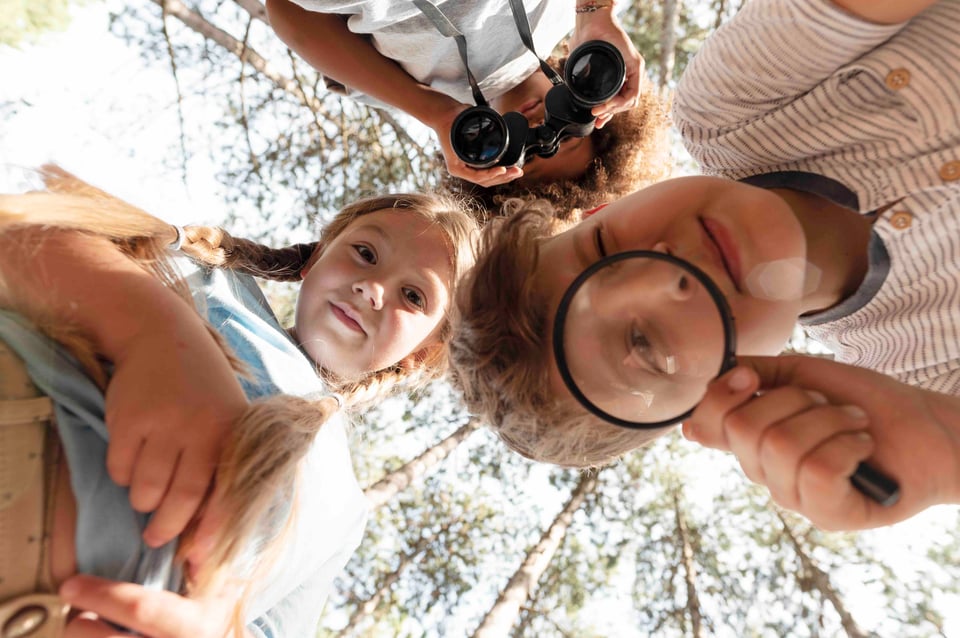
This article will provide you with
- a short description of the Reggio Emilia Approach
- an insightful comparison to the HEI Schools Curriculum.
1. What is the Reggio Emilia Approach?
The Reggio Emilia approach is an innovative and inspiring approach to early childhood education that views young children as individuals who are curious about their world and have the powerful potential to learn from all that surrounds them.
The Reggio Emilia approach has been adapted in various forms around the world, resonating with many educators. Schools across the globe, from the United States to Asia, have incorporated Reggio principles into their curricula, adapting the core values to their own cultural and educational contexts.
2. Compare Reggio Emilia and HEI educational model
1. Background
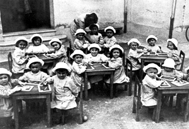 The Reggio Emilia Approach was born out of a movement for educational reform in Italy, initiated by Loris Malaguzzi after World War II. Developed by Loris Malaguzzi and parents in the local community, this philosophy emphasizes the development of a child through their interactions with parents, teachers, and the environment.
The Reggio Emilia Approach was born out of a movement for educational reform in Italy, initiated by Loris Malaguzzi after World War II. Developed by Loris Malaguzzi and parents in the local community, this philosophy emphasizes the development of a child through their interactions with parents, teachers, and the environment.
 On the other hand, the HEI Schools Curriculum is rooted in the highly acclaimed Finnish educational system, developed in collaboration with the University of Helsinki. It embodies the Finnish values of equality, collaboration, and holistic development.
On the other hand, the HEI Schools Curriculum is rooted in the highly acclaimed Finnish educational system, developed in collaboration with the University of Helsinki. It embodies the Finnish values of equality, collaboration, and holistic development.
2. Philosophical Foundations
 At the heart of the Reggio Emilia approach is the belief in the child as a strong, capable learner, full of potential, and ready to engage with and contribute to the world. It emphasizes the environment as the “third teacher”, vital in facilitating learning.
At the heart of the Reggio Emilia approach is the belief in the child as a strong, capable learner, full of potential, and ready to engage with and contribute to the world. It emphasizes the environment as the “third teacher”, vital in facilitating learning.
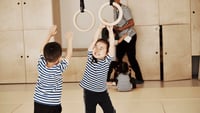 The HEI Schools Curriculum draws from the Finnish philosophy that education should support every aspect of a child’s growth, creating a foundation for lifelong learning. It values play as a significant mode of learning and includes it as a core component of the curriculum.
The HEI Schools Curriculum draws from the Finnish philosophy that education should support every aspect of a child’s growth, creating a foundation for lifelong learning. It values play as a significant mode of learning and includes it as a core component of the curriculum.
3. Curriculum Structure and Content
 The Reggio Emilia approach is characterized by its emergent curriculum, which evolves based on the children's interests. It is project-based and integrates documentation as a means of tracking and evaluating children’s learning experiences.
The Reggio Emilia approach is characterized by its emergent curriculum, which evolves based on the children's interests. It is project-based and integrates documentation as a means of tracking and evaluating children’s learning experiences.
 HEI Schools curriculum is thematic and play-based, with clearly defined areas of learning and a balanced daily rhythm. It provides structure yet is adaptable to the needs of individual children and their specific educational contexts.
HEI Schools curriculum is thematic and play-based, with clearly defined areas of learning and a balanced daily rhythm. It provides structure yet is adaptable to the needs of individual children and their specific educational contexts.
4. Learning Environments
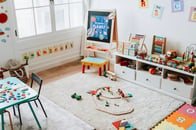 Learning environments in the Reggio Emilia approach are designed to be aesthetically pleasing and cognitively stimulating, with a focus on natural light, order, and beauty.
Learning environments in the Reggio Emilia approach are designed to be aesthetically pleasing and cognitively stimulating, with a focus on natural light, order, and beauty.
 HEI Schools environments are designed with a focus on functionality, simplicity, and the use of natural materials, reflecting the Finnish affinity for nature and sustainable practices.
HEI Schools environments are designed with a focus on functionality, simplicity, and the use of natural materials, reflecting the Finnish affinity for nature and sustainable practices.
5. Role of Educators
 Educators within the Reggio Emilia approach are co-learners, collaborators, and researchers alongside the children. They observe and document the children’s work to guide the curriculum.
Educators within the Reggio Emilia approach are co-learners, collaborators, and researchers alongside the children. They observe and document the children’s work to guide the curriculum.
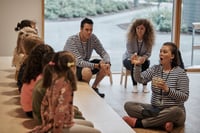 In HEI Schools, teachers are central to facilitating learning, and their professional development is ongoing and reflective of the latest educational research, ensuring that they remain at the forefront of educational innovation.
In HEI Schools, teachers are central to facilitating learning, and their professional development is ongoing and reflective of the latest educational research, ensuring that they remain at the forefront of educational innovation.
6. Assessment and Documentation
Reggio Emilia's assessment is qualitative, using documentation panels and portfolios to record and reflect on children’s learning journeys, allowing for a narrative form of assessment.
HEI Schools also emphasize observation and documentation but may incorporate more structured tools in line with Finnish educational standards to track and assess developmental milestones.
7. Parental and Community Involvement
Reggio Emilia places a strong emphasis on parental participation, viewing it as essential to the child’s learning experience. Community resources are often integrated into the learning process.
Similarly, HEI Schools encourage family engagement, recognizing the value of a collaborative approach that extends beyond the classroom to include families and communities.
8. Outcomes and Evidence of Success
While there is extensive qualitative evidence supporting the success of the Reggio Emilia approach, particularly in fostering creativity and critical thinking, quantitative research is less common due to its highly individualized nature.
HEI Schools, backed by Finnish educational research, show promise in creating transformative learning environments and are gaining recognition internationally for the play-based and holistic approach.
Conclusion
Both the Reggio Emilia approach and the HEI Schools Curriculum offer innovative and engaging educational experiences that have the power to shape early learning environments. While the Reggio Emilia approach provides a solid philosophical foundation, it may lack the necessary structures for implementation in classrooms. On the other hand, the HEI Schools Curriculum aligns with the established structures and core values of Finland's Early Childhood Education and Care and the National Core Curriculum. It goes a step further by providing comprehensive lesson plans and customized teacher training, making it adaptable and applicable in any educational setting worldwide.
More information
The HEI educational model has gained international recognition for its embrace of the fundamental principles of Finland's education system, incorporating a play-based and holistic approach that ignites a passion for learning in children. The HEI Schools Curriculum remains flexible and responsive, constantly adjusting to align with the changing demands of the global landscape and the unique characteristics of local communities.
If you wish to learn further about the implementation of the HEI Schools Curriculum and how it is used at HEI Schools kindergartens around the world, check out our HEI Schools Early Years Concept page.



-1.png?width=352&name=children%20looking%20in%20(1)-1.png)

.png?width=352&name=HEI%20Schools%20expands%20into%20the%20UAE%20(1600x600%20px).png)